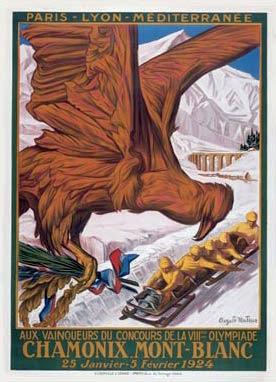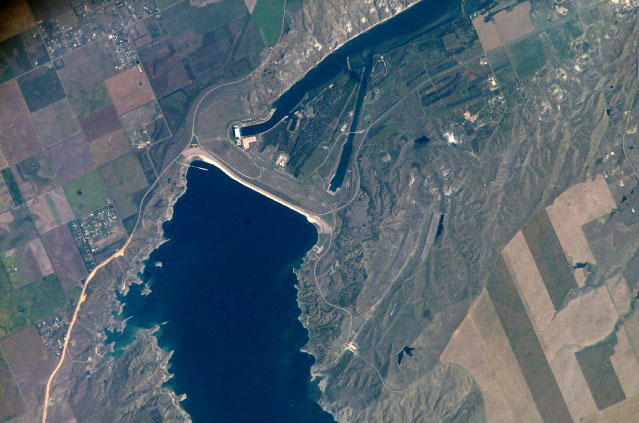|
Jaw (Ćehu′pa)
Jaw/Ćehu'pa, also known as His Fight/Oki'cize-ta'wa, was a Hunkpapa (Húŋkpapȟa) Lakota Winter count keeper and Ledger art artist Commonly known as Jaw (Ćehu'pa), a name which he allegedly received from a white brother-in-law, was born somewhere on the northern Great Plains of the United States to a Sans Arc (Itazipcola, Hazipco - 'Those who hunt without bows') father and a Hunkpapa mother, both bands of the then free roaming Teton (Thítȟuŋwaŋ) Lakota. He lost his mother when he was very young and was subsequently raised by his maternal grandmother. His childhood name was Ma'za-ho'waste (Loud-sounding Metal), and at the age of 17 he was given the name of Oki'cize-ta'wa (His Fight), which was his true name among his people. He was given this name after taking part in a fight for the first time. He had been out with a war party once before gaining recognition for being an exceptional horse raider, but this was his first experience in actual warfare. Jaw participated in ... [...More Info...] [...Related Items...] OR: [Wikipedia] [Google] [Baidu] |
Great Plains
The Great Plains is a broad expanse of plain, flatland in North America. The region stretches east of the Rocky Mountains, much of it covered in prairie, steppe, and grassland. They are the western part of the Interior Plains, which include the mixed grass prairie, the tallgrass prairie between the Great Lakes and Appalachian Plateau, and the Taiga Plains Ecozone, Taiga Plains and Boreal Plains Ecozone, Boreal Plains ecozones in Northern Canada. "Great Plains", or Western Plains, is also the ecoregion of the Great Plains or the western portion of the Great Plains, some of which in the farthest west is known as the High Plains. The Great Plains lie across both the Central United States and Western Canada, encompassing: *Most or all of the U.S. states of Kansas, Nebraska, and North Dakota, North and South Dakota; *Eastern parts of the U.S. states of Colorado, Montana, and Wyoming; *Parts of the U.S. states of New Mexico, Oklahoma, Texas; *Sometimes western parts of Iowa, Minnesot ... [...More Info...] [...Related Items...] OR: [Wikipedia] [Google] [Baidu] |
South Dakota State Historical Society
The South Dakota State Historical Society is South Dakota's official state historical society and operates statewide but is headquartered in Pierre, South Dakota at 900 Governors Drive. It is a part of the South Dakota Department of Education. History The South Dakota State Historical Society, after an initial meeting in April, was founded on May 7, 1862 as the Old Settlers Association of Dakota Territory. It was renamed the Historical Society of Dakota in 1863 and the South Dakota Historical Society in 1890, months after the state was admitted to the union. In 1901, the South Dakota Legislature took the Society into state government when it established the organization as an official arm of state government, the State Historical Society of South Dakota. About 1925, the name was changed to its present name, South Dakota State Historical Society. With each change of name, the property of the old Society was formally transferred to its successor. Over the years the Society was qua ... [...More Info...] [...Related Items...] OR: [Wikipedia] [Google] [Baidu] |
Year Of Birth Uncertain
A year is a unit of time based on how long it takes the Earth to orbit the Sun. In scientific use, the tropical year (approximately 365 solar days, 5 hours, 48 minutes, 45 seconds) and the sidereal year (about 20 minutes longer) are more exact. The modern calendar year, as reckoned according to the Gregorian calendar, approximates the tropical year by using a system of leap years. The term 'year' is also used to indicate other periods of roughly similar duration, such as the lunar year (a roughly 354-day cycle of twelve of the Moon's phasessee lunar calendar), as well as periods loosely associated with the calendar or astronomical year, such as the seasonal year, the fiscal year, the academic year, etc. Due to the Earth's axial tilt, the course of a year sees the passing of the seasons, marked by changes in weather, the hours of daylight, and, consequently, vegetation and soil fertility. In temperate and subpolar regions around the planet, four seasons are g ... [...More Info...] [...Related Items...] OR: [Wikipedia] [Google] [Baidu] |
19th-century Births
The 19th century began on 1 January 1801 (represented by the Roman numerals MDCCCI), and ended on 31 December 1900 (MCM). It was the 9th century of the 2nd millennium. It was characterized by vast social upheaval. Slavery was Abolitionism, abolished in much of Europe and the Americas. The First Industrial Revolution, though it began in the late 18th century, expanded beyond its British homeland for the first time during the 19th century, particularly remaking the economies and societies of the Low Countries, France, the Rhineland, Northern Italy, and the Northeastern United States. A few decades later, the Second Industrial Revolution led to ever more massive urbanization and much higher levels of productivity, profit, and prosperity, a pattern that continued into the 20th century. The Catholic Church, in response to the growing influence and power of modernism, secularism and materialism, formed the First Vatican Council in the late 19th century to deal with such problems an ... [...More Info...] [...Related Items...] OR: [Wikipedia] [Google] [Baidu] |
1924 Deaths
Events January * January 12 – Gopinath Saha shoots Ernest Day, whom he has mistaken for Sir Charles Tegart, the police commissioner of Calcutta, and is arrested soon after. * January 20–January 30, 30 – Kuomintang in China holds its 1st National Congress of the Kuomintang, first National Congress, initiating a policy of alliance with the Soviet Union and the Chinese Communist Party. * January 21 – Alexander Cambridge, 1st Earl of Athlone, The Earl of Athlone is appointed Governor-General of the Union of South Africa, and High Commissioner for Southern Africa.Archontology.org: A Guide for Study of Historical Offices: South Africa: Governors-General: 1910-1961 (Accessed on 14 April 2017) * January 22 – R ... [...More Info...] [...Related Items...] OR: [Wikipedia] [Google] [Baidu] |
Hunkpapa People
The Hunkpapa (Lakota: ) are a Native American group, one of the seven council fires of the Lakota tribe. The name ' is a Lakota word, meaning "Head of the Circle" (at one time, the tribe's name was represented in European-American records as ''Honkpapa''). By tradition, the set up their lodges at the entryway to the circle of the Great Council when the Sioux met in convocation."Hunkpapa Sioux Indian Tribe History" ''Handbook of American Indians'', 1906, carried in Access Genealogy, accessed 9 Dec 2009 They speak Lakȟóta, one of the three dialects of the |
Amidon Ledger Page No 53 By Jaw Ca
...
Amidon may refer to: People * Charles F. Amidon, a United States District Judge of the United States District Court for the District of North Dakota * Edna P. Amidon, chief of the Home Economics Education Service in the US Office of Education from 1938 to 1964 * George H. Amidon, a Vermont state commissioner of taxes and Vermont State Treasurer in U.S. * Kim Amidon, an American radio personality * Margaret Amidon, an American educator * Roger Amidon, an early settler of the Massachusetts Bay Colony and a French Huguenot * Sam Amidon, an American folk artist * Stephen Amidon, an American author and critic Other uses * Amidon, North Dakota, county seat of Slope County, North Dakota * ''Amidon'', a trade name for methadone Methadone, sold under the brand names Dolophine and Methadose among others, is a synthetic opioid used medically to treat chronic pain and opioid use disorder. Prescribed for daily use, the medicine relieves cravings and opioid withdrawal sym ... [...More Info...] [...Related Items...] OR: [Wikipedia] [Google] [Baidu] |
Jaw - His Fight By Leslie Smith 1884 WK 1
The jaws are a pair of opposable articulated structures at the entrance of the mouth, typically used for grasping and manipulating food. The term ''jaws'' is also broadly applied to the whole of the structures constituting the vault of the mouth and serving to open and close it and is part of the body plan of humans and most animals. Arthropods In arthropods, the jaws are chitinous and oppose laterally, and may consist of ''mandibles'' or ''chelicerae''. These jaws are often composed of numerous mouthparts. Their function is fundamentally for food acquisition, conveyance to the mouth, and/or initial processing (''mastication'' or ''chewing''). Many mouthparts and associate structures (such as pedipalps) are modified legs. Vertebrates In most vertebrates, the jaws are bony or cartilaginous and oppose vertically, comprising an ''upper jaw'' and a ''lower jaw''. The vertebrate jaw is derived from the most anterior two pharyngeal arches supporting the gills, and usually bears ... [...More Info...] [...Related Items...] OR: [Wikipedia] [Google] [Baidu] |
Amidon Ledger
...
Amidon may refer to: People * Charles F. Amidon, a United States District Judge of the United States District Court for the District of North Dakota * Edna P. Amidon, chief of the Home Economics Education Service in the US Office of Education from 1938 to 1964 * George H. Amidon, a Vermont state commissioner of taxes and Vermont State Treasurer in U.S. * Kim Amidon, an American radio personality * Margaret Amidon, an American educator * Roger Amidon, an early settler of the Massachusetts Bay Colony and a French Huguenot * Sam Amidon, an American folk artist * Stephen Amidon, an American author and critic Other uses * Amidon, North Dakota, county seat of Slope County, North Dakota * ''Amidon'', a trade name for methadone Methadone, sold under the brand names Dolophine and Methadose among others, is a synthetic opioid used medically to treat chronic pain and opioid use disorder. Prescribed for daily use, the medicine relieves cravings and opioid withdrawal sym ... [...More Info...] [...Related Items...] OR: [Wikipedia] [Google] [Baidu] |
Pierre, South Dakota
Pierre ( ) is the capital city of the U.S. state of South Dakota and the county seat of Hughes County. As of the 2020 census, its population was 14,091. Pierre is the eleventh-most populous city of South Dakota, and the second-least populous U.S. state capital (after Montpelier, Vermont). Founded in 1880 on the Missouri River, the city was selected to be the state capital when South Dakota was admitted as a state in 1889. Near the center of the state, the then-new settlement was across the river from the settlement of Fort Pierre, and near what became an important railroad crossing of the River. History Pierre was founded in 1880 on the east bank of the Missouri River opposite Fort Pierre, a former trading post that developed as a community. It was designated as the state capital when South Dakota gained statehood on November 2, 1889. Huron challenged the city to be selected as the capital, but Pierre was selected for its geographic centrality in the state. Fort Pie ... [...More Info...] [...Related Items...] OR: [Wikipedia] [Google] [Baidu] |






